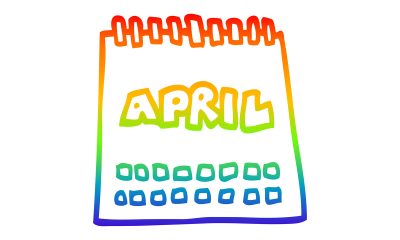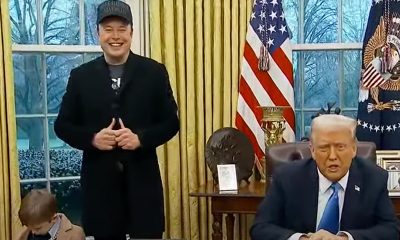a&e features
‘Queer Eye’s’ Bobby Berk offers dishy, celeb-heavy Q&A
Design guru in region this weekend for Belfort Furniture appearance
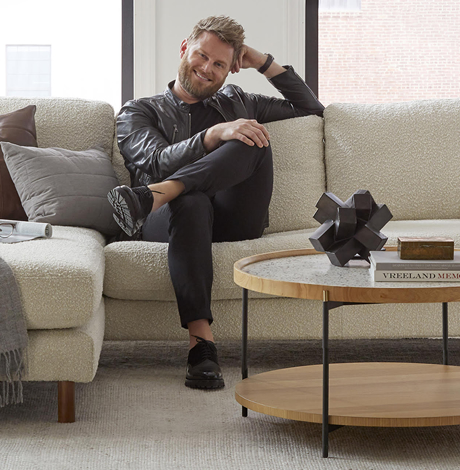
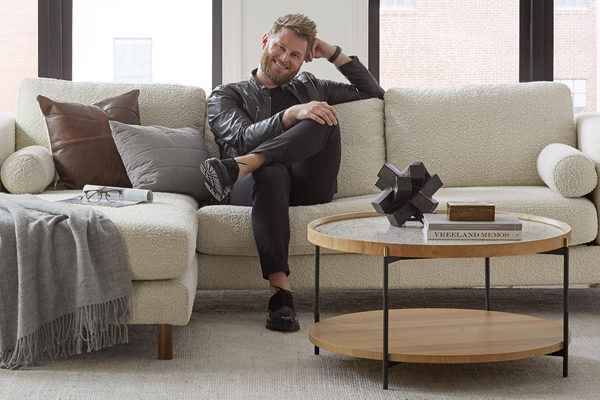
Bobby Berk
‘Conversation on Design’
Sunday, March 1
2 p.m.
Free
Building 3
22250 Shaw Road
Dulles, VARSVP to [email protected]
Bobby Berk, one of the “Queer Eye” Fab Five, will give the regional unveiling of his new furniture collection Bobby Berk for ART Furniture this weekend at Belfort Furniture in Dulles, Va. He spoke to the Blade Tuesday afternoon by phone from his home in Los Angeles about his designs, his costars, his gal pal Taylor Swift, his Hollywood adventures and a whole lot more.
WASHINGTON BLADE: How’s 2020 been for you so far?
BOBBY BERK: 2020’s been great, very busy. Just wrapped up shooting a podcast a few minutes ago, I’ve got your interview, then I’m running to do a live interview with Channel 9 in Sydney Australia. Been filming some additional shows, been doing a lot of stuff with “Queer Eye,” a lot of great things with my furniture lines, so 2020 already feels like it’s been a full year.
BLADE: Tell us what you’ll be showing at Belfort Furniture this weekend.
BERK: So my new furniture line with ART, it’s great because you know people ask me, fans from the show all the time, you know, “I wish you could decorate my house, I with you could pick out furniture for me,” and obviously I can’t with everyone so I wanted to create a line that was accessible to almost anyone. I think it would have been kind of a dick move of me to talk on “Queer Eye” about how changing your home and help change your life and then go out and make a super expensive furniture line that nobody could afford. So I wanted to make sure I partner with a company like ART who is really good at finding that perfect happy medium on price points to where you’re getting good quality furniture but you’re also getting it at a price point that most people can afford.
BLADE: What was the production timeframe roughly?
BERK: I believe we started the process when I was filming season three and four so that would have been late 2018, I think. … We launched it by spring of 2019 … (which) that was for stores to be able to come look at it like Belfort. Then by the time fall hit, it was in a lot of stores. And now this spring … additional stores are getting it that we weren’t able to fulfill in the very beginning first order. We’re dong 10 in about two months, then we’re going to be launching the second collection as well.
BLADE: How has the reaction been so far?
BERK: It’s been a very great reaction. We have had to stage out when retailers like Belfort start to carry it simply because there was such a great response to it, that we couldn’t open up all the stores that were wanting it. When we launched online, back in the fall, a lot of items instantly went out of stock, so it’s been a really great response. You know, it was a line that inspired by things that I would want in my own home so nice, cool, clean aesthetic that can really go with anyone’s decor. When I design, I always try to make sure I think about the ways a piece can not just look good in a home where people like modern, but also a traditional home. My sofas, for example, can bridge the gap between traditional, transitional and modern.
BLADE: To what degree do you curtail or adjust your creative impulses into something you think will sell? Is there conflict in your own head between art and commerce?
BERK: Uh, yeah, ‘cause for me personally, I would go very minimalist and modern, that’s more of my personal aesthetic, so I would always have to kind of find the happy medium between too modern and cold and still keeping it warm where more people will love it.
BLADE: Are you doing other markets?
BERK: I’ve already done a few in other markets, so Belfort will be my first one in the D.C. area, the only one. We’re very specific about only allowing certain retailers to carry it so we’re not competing against each other. I have another presentation in Orange County next week as well, then an event in Austin, Texas as well. I think it’s next week.
BLADE: How do you have time to keep all this stuff going with the TV show as well?
BERK: I don’t know (chuckles). I’m never home. I’m sadly gone probably 90 percent of the year the last few years so yeah, I’m just constantly on the road.
BLADE: Is this pace sustainable? What if “Queer Eye” goes another 10 years? Will you rip your hair out?
BERK: Uh, probably (laughs). No, this pace absolutely is not sustainable, I think all five of us feel that way but we also know that you know there’s not always a chance that things will be going this well, so we all need to, not take advantage of it, but utilize the recognition we’ve gotten from “Queer Eye” to do other things. Because of course “Queer Eye” could go on for 10 more years or it may go on for one more year. We never know, so we all want to make sure we’ve found those certain things in our wheelhouse that we’re able to continue to focus on. Before “Queer Eye,” I had a design firm and retail stores so, “Queer Eye” has just opened up more doors for me to be able to do more things with that like my collection at ART. So yeah, is this sustainable how much we travel and work? No, it’s not. But all five of us know that we’re not always going to have the amount of opportunities we have right now, so we need to take advantage of all the opportunities that present themselves and then, you know, in five years — I have a four-five year plan of moving to Santa Barbara and having kids and not working as much.
BLADE: On “Queer Eye,” the other guys spend a lot more face time with the heroes because you’re so busy remodeling. Do you ever feel left out?
BERK: Yeah, yeah, you know. With the other boys, they’re part of the show, they’re literally physically with the hero. You know, Jonathan is cutting their hair, Karamo is having a great conversation and helping them with self help, Antoni is teaching them to cook, Tan is helping them with their clothes — they have to physically be there with them whereas what I’m doing the hero can’t actually see, it’s actually against the rules for them to see it, so I’m often kept away from them simply because they’re not able to see what I’m dong and we want to see a surprise. So we have, I’m sure you’ve noticed in newer seasons, I am with the heroes more, but season one and two, I was barely with them at all. When I would be asked by producers if I wanted to go on a shopping trip wth Tan and help with clothes, I’d be like, “No I’m busy, working, that makes no sense,” but then the show came out and it was like, “Oh, I’m so busy working I’m not on the show.” So, newer seasons, I have a bit more interaction with the heroes than in the past.
BLADE: How did you like Japan and what was challenging about taping there?
BERK: I loved Japan, I’ve spent a lot of time in Japan before, it’s one of my favorite places, especially Tokyo. I love it there just because it’s so organized and clean and it’s such a respectable society. Some of the challenges filming there was space. People would sometimes think it’s easier to design a small space than a large space but it’s actually harder, especially in Japan where in rental spaces, you’re not allowed to hang anything on the walls, you’re not allowed to paint, you’re not allowed to do anything to the floors, so we had to get really creative on building functional loft furniture that we were able to make the space look super different than before without even painting or hanging a piece of art on the walls.
BLADE: There’s obvious camaraderie between you and your co-stars. Were you concerned at first whether your personalities would jell? To what do you attribute that camaraderie?
BERK: You know, the five of us from the start in casting, in final casting, there probably was between 40-50 guys around the various different design, fashion, food — what have you, and at first Karamo, Tan and I we just kind of gravitated to each other and were always hanging out. Then Antoni and Jonathan kind of came into the fold and none of us really thought, “Oh this is the Fab Five,” we just kind of naturally liked each other and I think the casting directors and executives from Netflix and Scout and ITV kind of saw that we had a natural chemistry, that we really naturally enjoyed each other and instead of it kind of being a competition, we were always in there telling each other what was going on and helping each other. So I think our camaraderie definitely helps. It’s not always a natural thing, you put five perfect strangers together who are with each other 24-7, but it’s grown definitely into kind of a sibling relationship. We’re brothers, we’re best friends, there are some moments where we want to wring each others necks, but the great thing about it is, we’ve spent so much time together, we really have developed a feeling of a sibling with each other. We can get mad at each other, but at the end of the day, we’re family, we’re brothers so we get over it and we’re very protective of each other. Sometimes it’s easy, most of the time it’s easy, but sometimes it’s hard. But I think that’s the thing with every relationship.
BLADE: Are you going to Karamo’s wedding?
BERK: Of course.
BLADE: You helping with any of the design?
BERK: Uh, a little bit, but I definitely can’t share what he’s shared with me.
BLADE: What did you think of Jonathan’s decision to come out as HIV-positive? Had he shared that with you previously?
BERK: I was the first one that he told even before we started filming “Queer Eye,” he and I both lived in L.A. at the time and so after casting, we became very close very quickly and he was over at my house all the time and he shared it with me even before we started filming, so I’ve known about it for probably a couple years before he publicly came out about it, so it wasn’t a shock to me. I was happy that he had the strength to do that and that he’s able to help other people by being very public about his status.
BLADE: Have you had many chances to get to know the original “Queer Eye” cast?
BERK: Yeah, I was actually out with them all of them in L.A. two weeks ago. I’ve known Thom Filicia for years, again, before I was on “Queer Eye” as a designer, I really am a designer, so he and I have been in the same industry, we’re always at the same events, we’re always at the same trade shows. And then Carson (Kressley), I’ve known for years. All the others I had met throughout the years, but I’m definitely closest to Thom simply because we’re in the same industry and we’ve known each other so long. But they’re all so amazing, they’re all so lovely, it’s amazing hanging out with them and seeing just how individually unique they all are, just like the five of us are, and how no matter how many years they’ve been apart since the original, when they get together, it’s like they’ve never skipped a beat, it’s cute.
BLADE: So you’d be totally down to do a crossover special of some kind?
BERK: Oh absolutely.
BLADE: Do you like Thom’s design aesthetic? (Filicia, too, has presented at Belfort Furniture.)
BERK: I think it’s beautiful. I think we have a very different design aesthetic. He’s definitely more transitional and traditional, I’m definitely more modern and minimalist, although I would say that both him and I design for the client or for the home. So where my home is very minimal and there’s not a whole lot of stuff in it, for heroes on “Queer Eye,” I can be maximalist for people who want a lot of stuff. So his personal aesthetic is beautiful, he’s done some amazing homes, some amazing condo buildings. But yeah, I love it.
BLADE: Did it bother you that Taylor Swift was, some would argue, rather late to the game in terms of being an LGBT ally?
BERK: You know, of course we always wish somebody would be vocal from day one but I also can very much understand the pressure that she’s been through being basically owned by a record label and being told by a publicist and record labels what you need to say and shouldn’t say, what you shouldn’t get involved in. You know as quote-unquote celebrities, we’re always told, “Oh be as neutral as possible, you don’t wanna offend people on the left or the right, stay out of politics, stay out of issues,” which some of us find much easier than others. You know, I often get myself in trouble because I have a hard time keeping my mouth shut. Jonathan’s the same way and so I can understand why she felt pressured to not be an ally, to not get involved publicly, you know what I mean? … I don’t hold it against her, all I can do is be as very happy that she is using her power to make a difference now and I couldn’t love her more. She’s one of the most sweet, humble, down-to-earth people I’ve met. … You never really know what to expect when you meet somebody like her because a lot of people I’ve met in Hollywood and entertainment come across as one thing and then you meet them in person and they are not at all that thing and it can be very sad and disappointing, so it was a great feeling when I got to meet her and hang out with her and realize that she really is what she portrays out there, she really is this sweet, loving girl who just wants to make the world a better place.
BLADE: Who’s somebody you met who’s markedly different from his or her public persona?
BERK: Hmmm, so yes. So RuPaul, I actually met in 2003, I was a manager at Restoration Hardware in New York and she came in looking for some knobs for some dresser she was doing and he was just the kindest, sweetest most lovely person and then after I had my own stores, he started coming in and shopping in my stores and he would come in and just the sweetest, warmest person. And again, on the show he’s the same way and I’m not saying that he’s not sweet and warm, but one thing I was surprised about when I see him for example at the Emmys, the first time I saw him at the Emmys, he wasn’t very warm, and I was like, “Huh, fame has changed him.” But our publicist at Netflix used to work on “Drag Race,” so he’s very close to Ru, he knows Ru very well, and I mentioned it to him I was like, “Wow, you know, I’ve met Ru multiple times and he’s always like the sweetest, kindest person, I don’t get that from him anymore.” He was like, “No, he just doesn’t like being in the spotlight at events like this so he gets very shy and quiet,” so sometimes you think somebody is some way and they’re not and like. … I thought Ru had gotten cold, ‘cause this industry can do it to you, but then I find out that no, Ru is just as shy and terrified as the rest of us.
BLADE: What was it like filming (Taylor Swift’s) “You Need to Calm Down” video? Surely all those celeb cameos — you were not all there at the same time I imagine?
BERK: All of us were but Tan. He was filming the season finale of “Next in Fashion” that day, so Jonathan and I went from watching the runway show of Tan’s finale directly to Taylor’s set and we met Antoni and Karamo there, so four of us were there together but Tan filmed his separately.
BLADE: Was Ellen or Adam Rippon or any of those people there that day?
BERK: Adam was there, he and I are actually friends. Hannah Hart was there, um — who else was there that day? They’re the only ones I remember being directly around us. The set was so massive and they filmed it over I think a week, so different celebs would come in at different times. Some would film in a studio in front of a green screen, for example Tan’s was shot in a studio, so yeah, we weren’t always there at the same time, that would have been chaos. Oh Todrick Hall was there as well.
BLADE: How is (husband) Dewey? Do you guys get enough time together?
BERK: No, we never get enough time together. He is definitely a very private, very introverted, shy guy. He couldn’t care less about any of the Hollywood stuff, which is actually great. I actually prefer it that way because when I’m at home, I’m back in my normal life. But yeah, no, we can never get enough time together. He’s a surgeon. We’ve been together for 16 years and since “Queer Eye,” he’s just started working less. He’s in private practice, so luckily he’s been able to take a step back a little back. He usually only works about two days a week then meets me wherever I’m filming.
BLADE: Do you know Nate Berkus? Do you like his stuff?
BERK: I love Nate Berkus. His stuff is great. Both he and Jeremiah. Their taste is impeccable, they’re handsome as hell, they’re the best dads. Yeah, I like them a lot.
BLADE: Do you miss your anonymity?
BERK: Absolutely (laughs).
BLADE: Give me an example.
BERK: I miss just being able to go to the grocery store. Or to Starbucks. You know, I miss being able to just roam around and just do regular things. There’s so many positive things about this and I’m not complaining about the loss of it at all, but, you know, sometimes I wish I could just go to the grocery store and go through all the fruit and shop around but I can’t really do that without getting stopped over and over, so I just pretty much order everything online. Sometimes I’ll go into a Starbucks and a fan will be there and there’ll be a moment of the show that’s really touched them or helped somebody in their family, so they’ll start telling me a story in Starbucks and then be crying, then I’ll be standing there in line holding them and hugging them thinking in my mind, “Oh this is amazing, this is so wonderful, but I really just wanted to get my coffee.” You know, it’s a double-edged sword. Sometimes I wish I could just run in, run out like I used to be able to.
BLADE: Please don’t think I’m asking this because I think you look fat — I truly do not. This is just something I’ve been meaning to ask someone who’s done a lot of TV. Does the camera add 10 pounds?
BERK: The camera adds 10 pounds of gay (laughs). Um, sometimes, yeah. But also when I started filming season five I was 210 pounds and now I’m like 183 so I went from being in very good shape before the show, to putting on a bit of weight during the show because our lives have just been so crazy to now really doubling down and focusing on fitness and not letting myself eat crap on set all the time and not work out.
BLADE: What did you mean 10 pounds of gay? Are gestures magnified?
BERK: Oh yeah, I’m always like, “Damn, do I sound that gay?” Yeah, and I also think it’s because the five of us together, we’re so comfortable together and able to be our true selves that sometimes we really queen out and not give a damn. It’s funny watching yourself.
BLADE: Was it hard to summon the courage to be so open about your past? Leaving home at 15 and all that.
BERK: It was hard because, you know, for quite a few years, I didn’t have a good relationship with my parents …
BLADE: It’s better now?
BERK: Oh yeah, it’s great now. But that’s why it’s a little hard because publicly talking about it, you know, it definitely made my mom sad, it definitely opened up old wounds, it took me a while to be OK talking about it. Sometimes I’m still not OK. Sometimes I’ll get asked about my relationship with my parents in interviews, not in this, but people will really pry and they’ll be like, “Oh well you know, on the show you talked about how horrible they were to you and blah blah blah blah blah, why are you talking to them now?” I’m just like whoah — if I’m able to say I’ve been able to reconcile with my family and we have a good relationship now, why would you try to open those wounds? Why would you try to hurt my mama?
BLADE: Thanks for your time and good luck with your line.
BERK: Thanks!
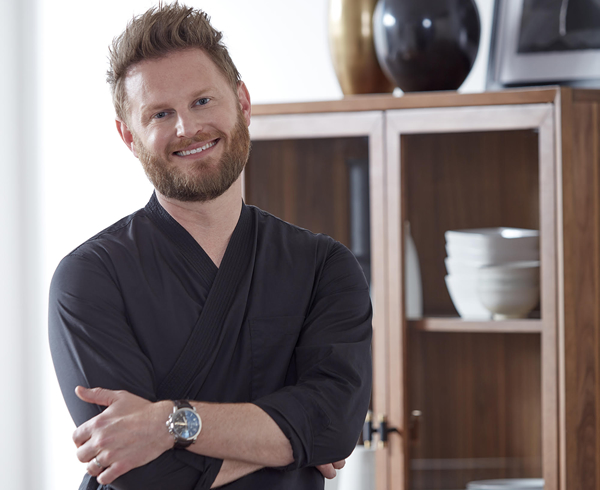
a&e features
Peppermint thrives in the spotlight
In exclusive interview, she talks Netflix show — and the need to resist Trump’s attacks
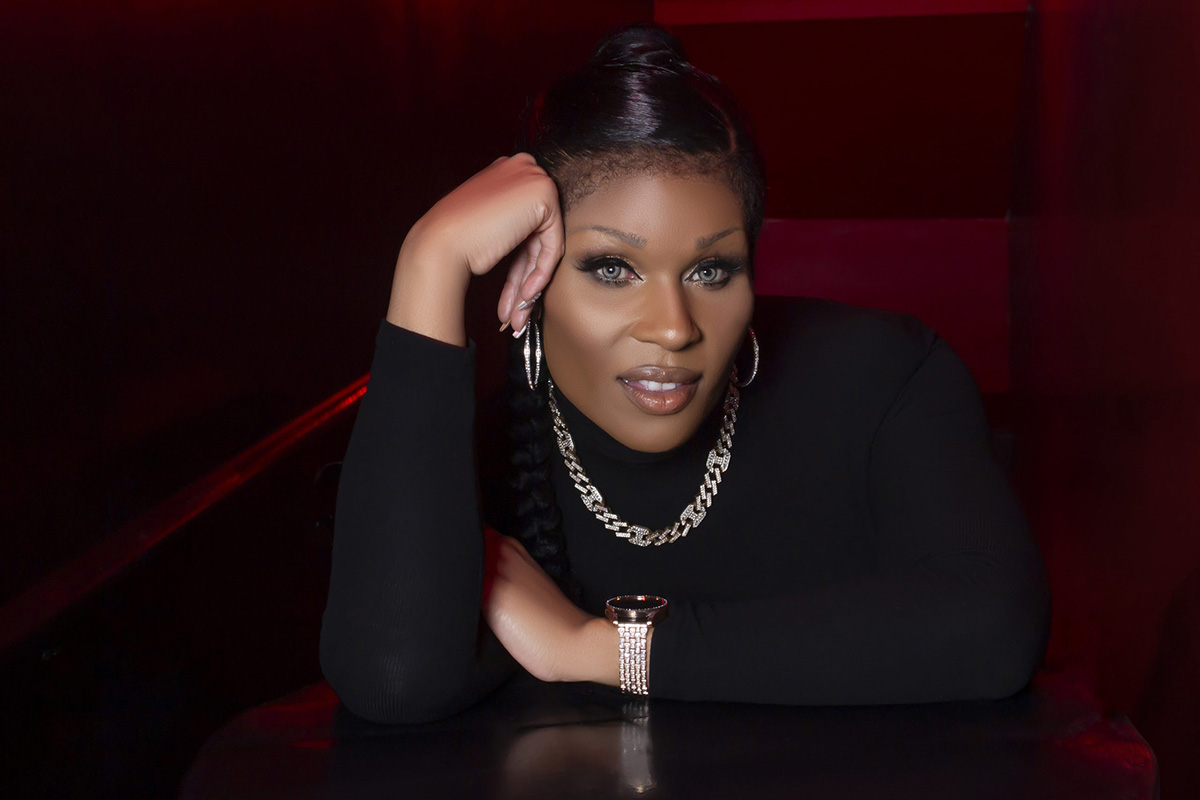
As an entertainer, there’s not much that Peppermint hasn’t done. She’s a singer, actor, songwriter, reality TV personality, drag queen, podcaster and the list goes on. Most importantly, as an activist she has been an invaluable role model for the trans, queer, and Black communities.
She’s a trailblazer who boasts an impressive list of ‘firsts.’ She is the first out trans contestant to be cast on “RuPaul’s Drag Race” (Season 9). She is the first trans woman to originate a principal musical role for Broadway’s “Head Over Heels.” She was also the first trans woman to compete in the runaway hit series “Traitors,” on Peacock, and she is the ACLU’s first-ever Artist Ambassador for Trans Justice. Her accolades are a true testament of the courage it took for Peppermint to live her authentic self.
We caught up with Peppermint to chat about her activism, taking on bigger roles on screen, our current political and social climate and life beyond the lens. For Peppermint, coming out as trans was not just a moment of strength—it was a necessity.
“It unfolded exactly as I had imagined it in terms of just feeling good and secure about who I am. I was in so much pain and sort of misery and anguish because I wasn’t able to live as free as I wanted to and that I knew that other people do when they just wake up. They get dressed, they walk out the door and they live their lives. Being able to live as your authentic self without fear of being persecuted by other people or by the government is essential to being healthy,” Peppermint tells the Blade in an exclusive interview.
“I was not able to imagine any other life. I remember saying to myself, ‘If I can’t imagine a life where I’m out and free and feeling secure and confident and left alone, then I don’t even want to imagine any kind of a life in the future,’” says Peppermint.
Recently, Peppermint returned for season 2 of Netflix’s comedy “Survival of the Thickest.” She added some spice and kick to the first season in her role as a drag bar owner. This time around, her character moves center stage, as her engagement and wedding become a major plot line in the show. Her expanded role and high-profile trans representation come at just the right time.
“It’s the largest acting role I’ve ever had in a television show, which my acting degree thanks me. It feels right on time, in a day where they’re rolling back trans rights and wanting to reduce DEI and make sure that we are limited from encouraging companies, corporations, industries, and institutions from not only featuring us, but supporting us, or even talking about us, or even referencing us.
“It feels great to have something that we can offer up as resistance. You can try to moralize, but it’s tougher to legislate art. So it feels like this is right on time and I’m just really grateful that they gave me a chance and that they gave my character a chance to tell a greater story.
Peppermint’s expanded role also accompanies a boom in queer representation in Black-powered media. Networks like BET and Starz and producers like Tyler Perry, are now regularly showcasing queer Black folks in main story lines. What does Peppermint think is fueling this increased inclusion?
“Queer folks are not new and queer Black folks are not new and Black folks know that. Every Black person knows at least one person who is queer. We are everywhere. We have not always been at the forefront in a lot of storytelling, that’s true, and that’s the part that’s new. It’s Hollywood taking us from the place where they usually have held us Black, queer folks in the makeup room, or as the prostitute, as an extra—not that there’s anything wrong with sex work or playing a background performer. I’ve played the best of the hookers! But those [roles] are very limiting.
“Hollywood has not historically done and still does not do a very good job of, including the voices of the stories that they make money [on]. And I think they’re realizing [the need] to be inclusive of our stories and our experiences, because for a long time it was just our stories without our actual experiences. It’s also exciting. It’s dramatic. It makes money. And they’re seeing that. So I think they’re just dipping their toes in. I think that they’re going to realize that balance means having us there in the room.”
Peppermint’s activism is tireless. She has raised more than six figures for prominent LGBTQ rights groups, she continues to speak around the nation, appears regularly on major media outlets addressing trans and LGBTQ issues and has been honored by GLAAD, World of Wonder, Out magazine, Variety, Condé Nast and more—all while appearing on screen and onstage in a long list of credits.
Now, under the Trump administration, she doesn’t have time to take a breath.
“I wouldn’t be able to do it if it weren’t second nature for me. Of course, there are ups and downs with being involved with any social issue or conversation and politics. But I am, for now, energized by it. It’s not like I’m energized by like, ‘Ooh, I just love this subject!’ right? It’s like, ‘Oh, we’re still being discriminated against, we gotta go and fight.’
“That’s just what it is. I get energy because I feel like we are quite literally fighting for our lives. I know that is hyperbole in some regards, but they are limiting access to things like housing, healthcare, job security and not having identification. Passport regulations are being put in a blender.”
Peppermint also mentions her thoughts on the unfair mandates to remove trans service members and revoke the rights and resources from the veterans who worked their whole lives to fight for this country.
“When you strip all these things away, it makes it really difficult for people to have a life and I know that that is what they’re doing. When I look around and see that that is what is at stake, I certainly feel like I’m fighting for my life. And that’s energizing.
“The only thing that would be the most rewarding besides waking up in a utopia and suddenly we’re all equal and we’re not discriminating against each other—which probably is not happening this year—is to be able to be involved in a project like this, where we can create that world. It’s also being built by people who are a part of that story in real life and care about it in real life.”
Peppermint is clear on her point that now is the time for all of the letters of the LGBTQ community to come together. Everyone who is trans and queer should be joining the fight against the issues that affect us all.
“Just trust us and understand that our experiences are tied together. That is how and why we are discriminated against in the way[s] that we are. The people who discriminate—just like how they can’t really distinguish between somebody who’s Dominican and somebody who’s African American — you’re Black when you’re getting pulled over. We are discriminated against in much the same way. It’s the same with being trans or queer or gender non-conforming or bi, we all have our own experiences and they should be honored.
“When laws are being created to harm us, we need to band together, because none of y’all asses is gonna be able to stop them from getting rid of marriage equality—which is next. If you roll the tape back to three years ago when somebody was trying to ask me about drag queen bans on readings in school, I was saying they’re coming for trans rights, which comes for bodily autonomy and abortion rights, which comes for gay marriage rights. Those three things will be wiped out.
Peppermint doesn’t take a pause to get fired up and call gay folk out in their obligation to return the favor to the Black trans community.
She shares with us her final thoughts.
“You cis-gender homosexuals need to stand the fuck up and understand that we are standing in front of you. It’s very difficult to understand this and know this, but so many of the rights that we have were hard fought and won by protest and by people fighting very hard for them. And many of those people in every single instance from the suffrage movement, obviously Civil Rights, queer rights, the AIDS and HIV movement—Black queer people have been there the entire time. Trans people have always been a part of that story, including Stonewall. Yes, we are using different terminology. Yes, we have different lenses to view things through, but let me tell you, if you allow us to be sacrificed before you see us go off the side, you will realize that your foot is shackled to our left foot. So, you better stand the fuck up!”
Peppermint for president!
a&e features
Tristan Schukraft on keeping queer spaces thriving
New owner of LA’s Abbey expands holdings to Fire Island, Mexico
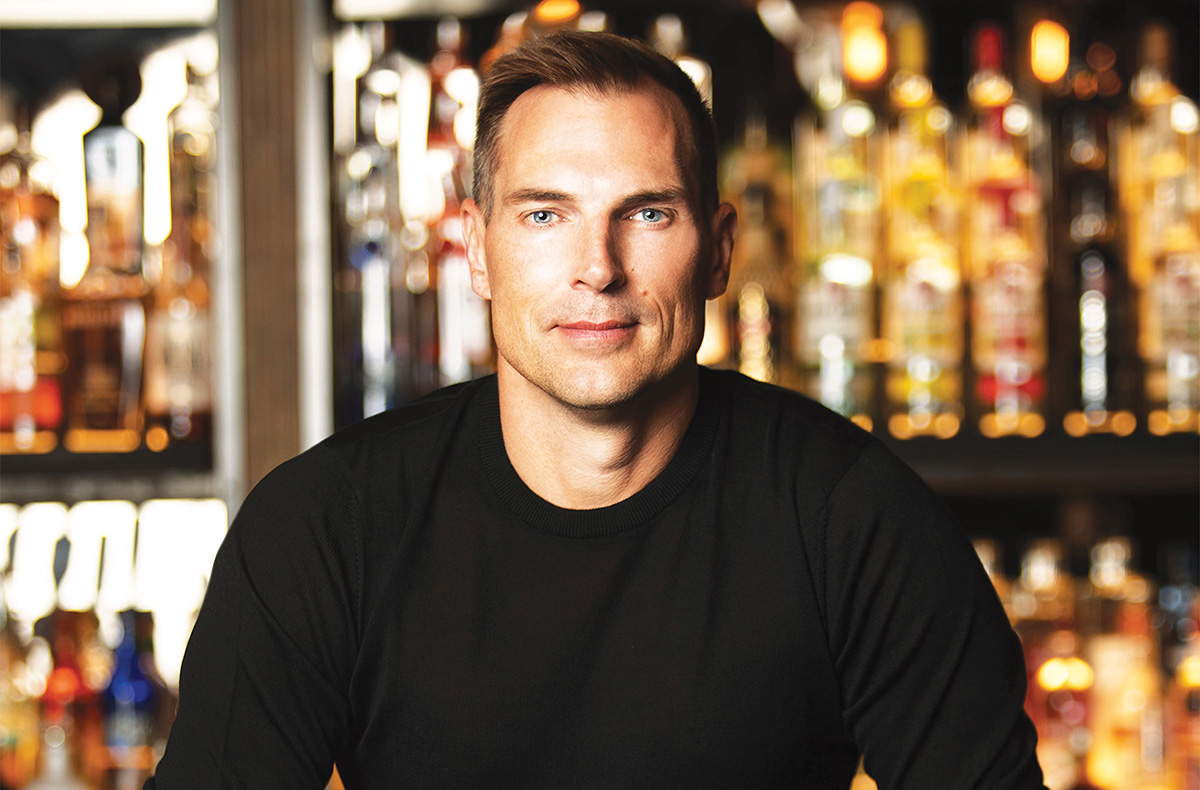
LOS ANGELES — Like the chatter about Willy Wonka and his Chocolate Factory, the West Hollywood community here started to whisper about the man who was going to be taking over the world-famous Abbey, a landmark in Los Angeles’s queer nightlife scene. Rumors were put to rest when it was announced that entrepreneur Tristan Schukraft would be taking over the legacy created by Abbey founder David Cooley. All eyes are on him.
For those of us who were there for the re-opening of The Abbey, when the torch was officially passed, all qualms about the new regime went away as it was clear the club was in good hands and that the spirit behind the Abbey would forge on. Cher, Ricky Martin, Bianca del Rio, Jean Smart, and many other celebrities rubbed shoulders with veteran patrons, and the evening was magical and a throwback to the nightclub atmosphere pre-COVID.
The much-talked-about purchase of the Abbey was just the beginning for Schukraft. It was also announced that this business impresario was set to purchase the commercial district of Fire Island, as well as projects launching in Mexico and Puerto Rico. What was he up to? Tristan sat down with the Blade to chat about it all.
“We’re at a time right now when the last generation of LGBT entrepreneurs and founders are all in their 60s and they’re retiring. And if somebody doesn’t come in and buy these places, we’re going to lose our queer spaces.”
Tristan wasn’t looking for more projects, but he recounts what happened in Puerto Rico. The Atlantic Beach Hotel was the gay destination spot and the place to party on Sundays, facing the gay beach. A new owner came in and made it a straight hotel, effectively taking away a place of fellowship and history for the queer community. Thankfully, the property is gay again, now branded as the Tryst and part of Schukraft’s portfolio with locations in Puerto Vallarta and Fire Island.
“If that happens with the Abbey and West Hollywood, it’s like Bloomingdale’s in a mall. It’s kind of like a domino effect. So that’s really what it is all about for me at this point. It has become a passion project, and I think now more than ever, it’s really important.”
Tristan is fortifying spaces for the queer community at a time when the current administration is trying to silence the LGBTQ+ community. The timing is not lost on him.
“I thought my mission was important before, and in the last couple of months, it’s become even more important. I don’t know why there’s this effort to erase us from public life, but we’ve always been here. We’re going to continue to be here, and it brings even more energy and motivation for me to make sure the spaces that I have now and even additional venues are protected going in the future.”
The gay community is not always welcoming to fresh faces and new ideas. Schukraft’s takeover of the Abbey and Fire Island has not come without criticism. Who is this man, and how dare he create a monopoly? As Schukraft knows, there will always be mean girls ready to talk. In his eyes, if someone can come in and preserve and advance spaces for the queer community, why would we oppose that?
“I think the community should be really appreciative. We, as a community, now, more than ever, should stand together in solidarity and not pick each other apart.”
As far as the Abbey is concerned, Schukraft is excited about the changes to come. Being a perfectionist, he wants everything to be aligned, clean, and streamlined. There will be changes made to the DJ and dance booth, making way for a long list of celebrity pop-ups and performances. But his promise to the community is that it will continue to be the place to be, a place for the community to come together, for at least another 33 years.
“We’re going to build on the Abbey’s rich heritage as not only a place to go at night and party but a place to go in the afternoon and have lunch. That’s what David Cooley did that no others did before, is he brought the gay bar outside, and I love that.”
Even with talk of a possible decline in West Hollywood’s nightlife, Schukraft maintains that though the industry may have its challenges, especially since COVID, the Abbey and nightlife will continue to thrive and grow.
“I’m really encouraged by all the new ownership in [nightlife] because we need another generation to continue on. I’d be more concerned if everybody was still in their sixties and not letting go.”
In his opinion, apps like Grindr have not killed nightlife.
“Sometimes you like to order out, and sometimes you like to go out, and sometimes you like to order in, right? There’s nothing that really replaces that real human interaction, and more importantly, as we know, a lot of times our family is our friends, they’re our adopted family.
Sometimes you meet them online, but you really meet them going out to bars and meeting like-minded people. At the Abbey, every now and then, there’s that person who’s kind of building up that courage to go inside and has no wingman, doesn’t have any gay friends. So it’s really important that these spaces are fun, to eat, drink, and party. But they’re really important for the next generation to find their true identity and their new family.”
There has also been criticism that West Hollywood has become elitist and not accessible to everyone in the community. Schukraft believes otherwise. West Hollywood is a varied part of queer nightlife as a whole.
“West Hollywood used to be the only gay neighborhood, and now you’ve got Silver Lake and you’ve got parts of Downtown, which is really good because L.A., is a huge place. It’s nice to have different neighborhoods, and each offers its own flavor and personality.”
Staunch in his belief in his many projects, he is not afraid to talk about hot topics in the community, especially as they pertain to the Abbey. As anyone who goes to the Abbey on a busy night can attest to, the crowd is very diverse and inclusive. Some in the community have started to complain that gay bars are no longer for the gay community, but are succumbing to our straight visitors.
Schukraft explains: “We’re a victim of our own success. I think it’s great that we don’t need to hide in the dark shadows or in a hole-in-the-wall gay bar. I’m happy about the acceptance. I started Tryst Hotels, which is the first gay hotel. We’re not hetero-friendly, we’re not gay-friendly. We’re a gay hotel and everyone is welcome. I think as long as we don’t change our behavior or the environment in general at the Abbey, and if you want to party with us, the more than merrier.”
Schukraft’s message to the community?
“These are kind of dangerous times, right? The rights that we fought for are being taken away and are being challenged. We’re trying to be erased from public life. There could be mean girls, but we, as a community, need to stick together and unite, and make sure those protections and our identity aren’t erased. And even though you’re having a drink at a gay bar, and it seems insignificant, you’re supporting gay businesses and places for the next generation.”
a&e features
Creator Max Mutchnick on inspirations for ‘Mid-Century Modern’
Real-life friendships and loss inform plot of new Hulu show
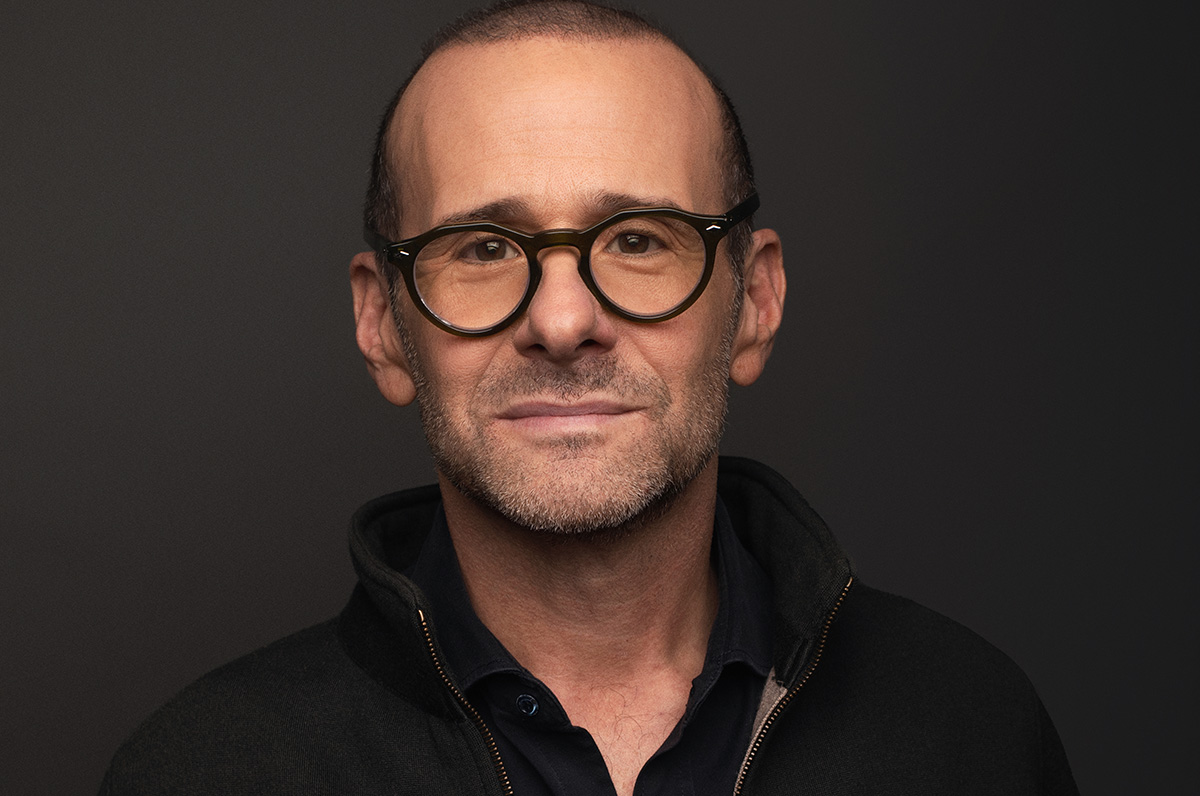
It’s been a long time – maybe 25 years when “Will & Grace” debuted – since there’s been so much excitement about a new, queer sitcom premiering. “Mid-Century Modern,” which debuted on Hulu last week, is the creation of Max Mutchnick and David Kohan, the gay men who were also behind “Will & Grace.”
Set in Palm Springs, Calif., following the death of the one of their closest friends, three gay men gather to mourn. Swept up in the emotions of the moment, Bunny (Nathan Lane) suggests that Atlanta-based flight attendant Jerry (Matt Bomer) and New York-based fashion editor Arthur (Nathan Lee Graham) move into the mid-century modern home he shares with his mother Sybil (the late Linda Lavin). Over the course of the first season’s 10 episodes, hilarity ensues. That is, except for the episode in which they address Sybil’s passing. The three male leads are all fabulous, and the ensemble cast, including Pamela Adlon as Bunny’s sister Mindy, and the stellar line-up of guest stars, such as Jesse Tyler Ferguson, Vanessa Bayer, Richard Kind, and Cheri Oteri, keep humor buzzing. Shortly before the premiere of “Mid-Century Modern,” Mutchnick made time for an interview with the Blade.
BLADE: I’d like to begin by saying it’s always a delight to speak to a fellow Emerson College alum. In ways would you say that Emerson impacted your professional and creative life?
MAX MUTCHNICK: I think Emerson was the first place that reflected back to me that my voice, my thoughts were good, and they were worth listening to. I developed a confidence at Emerson that did not exist in my body and soul. It was a collection of a lot of things that took place in Boston, but I mean we can just put it all under the Emerson umbrella.
BLADE: Before “Will & Grace,” you co-created the NBC sitcom “Boston Common,” which starred fellow Emerson alum Anthony Clark. Is it important for you to maintain those kinds of alumni relationships?
MUTCHNICK: Because Emersonians are such scrappy little monkeys and they end up being everywhere in the world, you can’t help but work with someone from Emerson at some point in your career. I’m certainly more inclined to engage with someone from Emerson once I learn that they went to my alma mater. For me, it has much more to do with history and loyalty. I don’t think of myself as one of those guys that says, “Loyalty means a lot to me. I’m someone that really leans into history.” It’s just what my life and career turned out to be. The longer I worked with people and the more often I worked with them, the safer that I felt, which means that I was more creative and that’s the name of the game. I’ve got to be as comfortable as possible so I can be as creative as possible. If that means that a person from Emerson is in the room, so be it. (Costume designer) Lori Eskowitz would be the Emerson version. And then (writer and actor) Dan Bucatinsky would be another version. When I’m around them for a long time, that’s when the best stuff comes.
BLADE: Relationships are important. On that subject, your new Hulu sitcom “Mid-Century Modern” is about the longstanding friendship among three friends, Bunny (Nathan Lane), Jerry (Matt Bomer), and Arthur (Nathan Lee Graham). Do you have a friendship like the one shared by these three men?
MUTCHNICK: I’m absolutely engaged in a real version of what we’re projecting on the show. I have that in my life. I cannot say that I’m Jerry in any way, but the one thing that we do have in common is that in my group, I’m the young one. But I think that that’s very common in these families that we create. There’s usually a young one. Our culture is built on learning from our elders. I didn’t have a father growing up, so maybe that made me that much more inclined to seek out older, wiser, funnier, meaner friends. I mean the reason why you’re looking at a mouthful of straight, white teeth is because one of those old bitches sat across from me about 25 years ago at a diner and said, “Girl, your teeth are a disaster, and you need to get that fixed immediately.” What did I know? I was just a kid from Chicago with two nickels in my pocket. But I found three nickels and I went and had new teeth put in my head. But that came from one of my dearest in the group.
BLADE: Do you think that calling “Mid-Century Modern” a gay “Golden Girls” is a fair description?
MUTCHNICK: No. I think the gay “Golden Girls” was really just used as a tool to pitch the show quickly. We have an expression in town, which is “give me the elevator pitch,” because nobody has an attention span. The fastest way you can tell someone what David (Kohan) and I wanted to write, was to say, “It’s gay Golden Girls.” When you say that to somebody, then they say, “OK, sit down now, tell me more.” We did that and then we started to dive into the show and realized pretty quickly that it’s not the gay “Golden Girls.” No disrespect to the “Golden Girls.” It’s a masterpiece.
BLADE: “Mid-Century Modern” is set in Palm Springs. I’m based in Fort Lauderdale, a few blocks south of Wilton Manors, and I was wondering if that gay enclave was ever in consideration for the setting, or was it always going to be in Palm Springs?
MUTCHNICK: You just asked a really incredible question! Because, during COVID, Matt Bomer and I used to walk, because we live close by. We had a little walking group of a few gay gentlemen. On one of those walks, Matt proposed a comedy set in Wilton Manors. He said it would be great to title the show “Wilton Manors.” I will tell you that in the building blocks of what got us to “Mid-Century Modern,” Wilton Manors, and that suggestion from Matt Bomer on our COVID walks, was part of it.
BLADE: Is Sybil, played by the late Linda Lavin, modeled after a mother you know?
MUTCHNICK: Rhea Kohan (mother of David and Jenji). When we met with Linda for the first time over Zoom, when she was abroad, David and I explained to her that this was all based on Rhea Kohan. In fact, some of the lines that she (Sybil) speaks in the pilot are the words that Jenji Kohan spoke about her mother in her eulogy at the funeral because it really summed up what the character was all about. Yes, it’s very much based on someone.
BLADE: The Donny Osmond jokes in the second episode of “Mid-Century Modern” reminded me of the Barry Manilow “fanilows” on “Will & Grace.” Do you know if Donny is aware that he’s featured in the show?
MUTCHNICK: I don’t. To tell you the truth, the “fanilow” episode was written when I was not on the show. I was on a forced hiatus, thanks to Jeff Zucker. That was a show that I was not part of. We don’t really work that way. The Donny Osmond thing came more from Matt’s character being a Mormon, and also one of the writers. It’s very important to mention that the writing room at “Mid-Century Modern,” is (made up of) wonderful and diverse and colorful incredible humans – one of them is an old, white, Irish guy named Don Roos who’s brilliant…
BLADE: …he’s Dan Bucatinsky’s husband.
MUTCHNICK: Right! Dan is also part of the writing room. But I believe it was Don who had a thing for Donny, and that’s where it comes from. I don’t know if Donny has any awareness. The only thing I care about when we turn in an episode like that is I just want to hear from legal that we’re approved.
BLADE: “Mid-Century Modern” also includes opportunities for the singers in the cast. Linda Lavin sang the Jerome Kern/Ira Gershwin tune “Long Ago (And Far Away)” and Nathan Lane and the guys sang “He Had It Coming” from “Chicago.” Was it important to give them the chance to exercise those muscles?
MUTCHNICK: I don’t think it was. I think it really is just the managers’ choice. David Kohan and I like that kind of stuff, so we write that kind of stuff. But by no means was there an edict to write that. We know what our cast is capable of, and we will absolutely exploit that if we’re lucky enough to have a second season. I have a funky relationship with the song “Long Ago (And Far Away).” It doesn’t float my boat, but everybody else loved it. We run a meritocracy, and the best idea will out. That’s how that song ended up being in the show. I far prefer the recording of Linda singing “I’ll Be Seeing You” over her montage in episode eight, “Here’s To You, Mrs. Schneiderman.” We were just lucky that Linda had recorded that. That recording was something that she had done and sent to somebody during COVID because she was held up in her apartment. That’s what motivated her to make that video and send it. That’s how we were able to use that audio.
BLADE: Being on a streaming service like Hulu allows for characters to say things they might not get away with on network TV, including a foreskin joke, as well as Sybil’s propensity for cursing.
MUTCHNICK: And the third line in the show is about him looking like a “reluctant bottom.” I don’t think that’s something you’re going to see on ABC anytime soon. David and I liked the opportunity to open up the language of this show because it might possibly open the door to bringing people…I’m going to mix metaphors…into the tent that have never been there before. A generation that writes off a sitcom because that language and that type of comedy isn’t the way that they sound. One of the gifts of doing this show on Hulu is that we get to write dialogue that sounds a little bit more like you and I sound. As always, we don’t want to do anything just to do it.
BLADE: It didn’t feel that way.
MUTCHNICK: It’s there when it’s right. [Laughs] I want to have a shirt made with Linda’s line, as her mother always used to say, “Time is a cunt.”
BLADE: “Mid-Century Modern” also utilizes a lot of Jewish humor. How important is it for you to include that at this time when there is a measurable rise in anti-Semitism?
MUTCHNICK: I think it’s important, but I don’t think it’s the reason why we did it. We tried very hard to not write from a place of teaching or preaching. We really are just writing about the stuff that makes us laugh. One of the things that makes something better and something that you can invest in is if it’s more specific. We’re creating a character whose name is Bunny Schneiderman and his mother’s name is Sybil and they made their money in a family-run business, it gets Jewy, and we’re not going to shy away from it. But we’re definitely not going to address what’s going on in the world. That doesn’t mean I don’t find it very upsetting, but I’m writing always from the point of view of entertaining the largest number of people that I can every week.
BLADE: “Mid-Century Modern” has a fantastic roster of guest stars including Jesse Tyler Ferguson, Vanessa Bayer, Billie Lourd, Cheri Oteri, Richard Kind, Rhea Perlman, and Judd Hirsch. Are there plans to continue that in future seasons?
MUTCHNICK: Yes. As I keep saying, if we’re so lucky that we get to continue, I don’t want to do “The Love Boat.” Those are fine comic actors, so I don’t think it feels like that. But if we get to keep going, what I want to do is broaden the world because that gives us more to write about. I want to start to introduce characters that are auxiliary to the individuals. I want to start to meet Arthur’s family, so we can return to people. I want to introduce other neighbors, and different types of gay men because we come in so many different flavors. I think that we should do that only because I’m sure it’s what your life is and it’s what my life is. I’ve got a lot of different types. So, yes, we will be doing more.
BLADE: Finally, Linda Lavin passed away in December 2024, and in a later episode, the subject of her character Sybil’s passing is handled sensitively, including the humorous parts.
MUTCHNICK: We knew we had a tall order. We suffered an incredible loss in the middle of making this comedy. One of the reasons why I think this show works is because we are surrounded by a lot of really talented people. Jim Burrows and Ryan Murphy, to name two. Ryan played a very big role in telling us that it was important that we address this, that we address it immediately. That we show the world and the show goes on. That wasn’t my instinct because I was so inside the grief of losing a friend, because she really was. It wasn’t like one of those showbizzy-type relationships. And this is who she was, by the way, to everybody at the show. It was the way that we decided to go. Let’s write this now. Let’s not put this at the end of the season. Let’s not satellite her in. Let’s not “Darren Stevens” the character, which is something we would never do. The other thing that Jim Burrows made very clear to us was the import of the comedy. You have to write something that starts exactly in the place that these shows start. A set comedy piece that takes place in the kitchen. Because for David and me, as writers, we said we just want to tell the truth. That’s what we want to do with this episode and that’s the way that this will probably go best for us. The way that we’ve dealt with grief in our lives is with humor. That is the way that we framed writing this episode. We wanted it to be a chapter from our lives, and how we experience this loss and how we recover and move on.
-
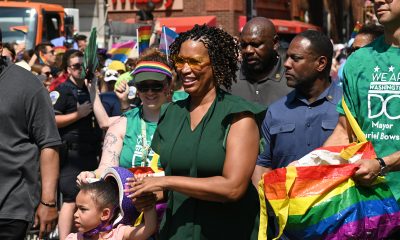
 District of Columbia4 days ago
District of Columbia4 days agoFinal push to raise funds, fill D.C. hotels as WorldPride nears
-

 District of Columbia4 days ago
District of Columbia4 days agoReenactment of 1965 gay rights protest at White House set for April 17
-
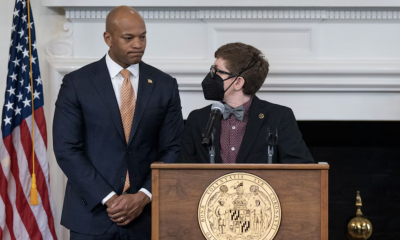
 Maryland4 days ago
Maryland4 days agoFreeState Justice: Transgender activist ‘hijacked’ Moore’s Transgender Day of Visibility event
-

 Hungary4 days ago
Hungary4 days agoHungarian MPs amend constitution to ban public LGBTQ events

